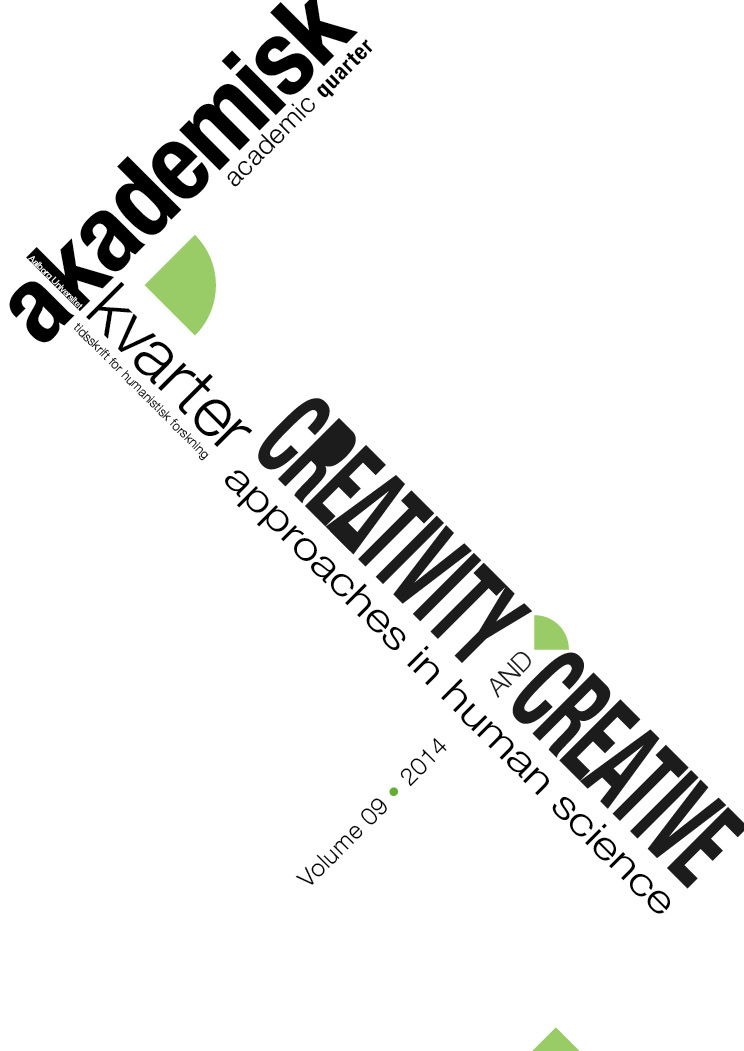The initiative to organize an issue of Academic Quarter on creativity originates from the 32th International Human Science Research Conference (IHSRC), which took place at the University of Aalborg in the Northern Denmark in August 2013. Here the overall theme of the conference was ’Creativity in Human Science Research, Methodology and Theory’. More than 150 human scientists from all over the world participated in the conference in Denmark. According to the conference flyer:
"All human sciences exist in a tension between tradition and renewal. At the conference, we hope that participants will discuss how to renew the human sciences creatively, and also to present ideas about what creativity is as a basic human phenomenon. How can phenomenological, hermeneutic and other human science traditions be respected and yet renewed in creative directions? How – and how much – should human scientists experiment with creative methodological practices when researching human phenomena? What role can the arts play? Are there limits to creativity? Can human beings become too creative – in life as well as in research? And what can human scientists actually contribute with to the current creativity discourse?"
Many of those who have contributed to the present issue attended the conference.
This issue raises a fundamental question that must be of importance for every human scientist: What is creativity really? And how can and why should a more ‘creative’ approach in human science be understood and defended? In what ways can phenomenology and hermeneutics become more open to insights into the nature of creativity and how should we talk about creative ways of doing phenomenology, hermeneutics, and human science as such?
In the current issue, you will find many different answers to what creativity is and what a creative human science approach could look like, and how to practice it. We have organized the content of this issue (28 articles) under four main themes:
• Promoting Creativity
• Creativity and Research Methods
• Educational Approaches and Methods
• Design, Aesthetics and Creativity
